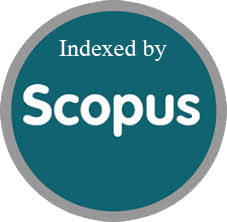MEASUREMENT OF FINANCIAL INCLUSION: A COMPARISON OF SELECTED METHODOLOGIES
Abstract
Abstract:- Purpose: The aim is to compare the selected methodologies used for constructing an Index of Financial Inclusion (IFI), as there exists conflict over the methodologies adopted to construct a financial inclusion index in the literature in terms of performance accuracy, and efficiency. The impact of dimension weights on index values has also been studied. Design/methodology/approach: An IFI has been built with three broad dimensions, banking penetration, availability, and usage of banking services with the selected methodologies. Data for the study include state/UT-wide bank data, demographical, geographical, and economic data, which are taken from Reserve Bank of India’s publications. Findings: (1) An IFI constructed with the methodologies (TOPSIS with EWM and Sarma (2015) with EWM) shows almost similar performances in terms of descriptive statistics; (2) There is only a slight difference in the financial inclusion performance between the methodologies based on Camera and Tuesta (2014) with two-stage PCA and Sarma (2008, 2015) with the subjective weights which make use of the descriptive statistics; (3) Camera and Tuesta (2014) methodology assigns a narrow weight to the index dimensions whereas, the proposed two-stage PCA model assigns a wider weight. Practical implications: The present study is useful to all the stakeholders, who are interested in the measurement of financial inclusion, say policymakers, research communities, etc., and the study offers direction to future studies on the methodology to be adopted. Originality/value – To the best of authors’ knowledge, no studies have been carried out with the same purpose. Hence, the present study is new to the IFI literature.






